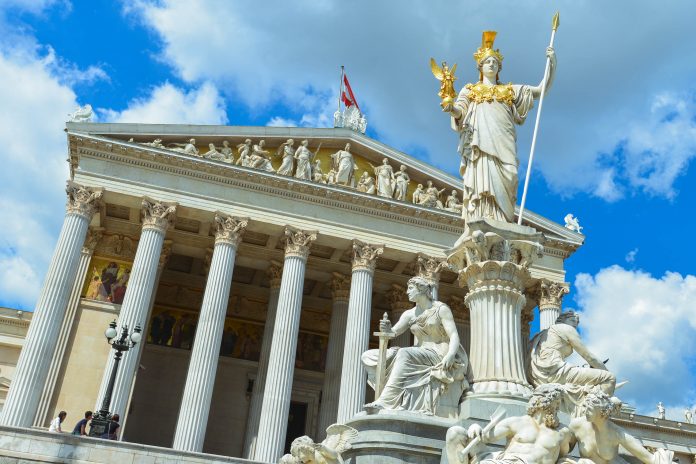Das Wiener Parlament an der Ringstraße ist ein prachtvolles Beispiel der Wiener Ringstraßenarchitektur aus dem 19. Jahrhundert. Im Zuge von Führungen kann innerhalb der eindrucksvollen Mauern das österreichische Staatswesen hautnah erlebt werden.
Das Parlamentsgebäude im Herzen von Wien beherbergt mit Bundesrat, Nationalrat und den gesetzgebenden Kammern die Regierung von Österreich. Der eindrucksvolle Bau liegt an der Wiener Ringstraße in unmittelbarer Nähe zum Burgtheater und dem Rathaus.
Inhaltsverzeichnis
BILDER: Parlament in Wien
Fotogalerie: Parlament in Wien
Fassadenfront des Wiener Parlaments
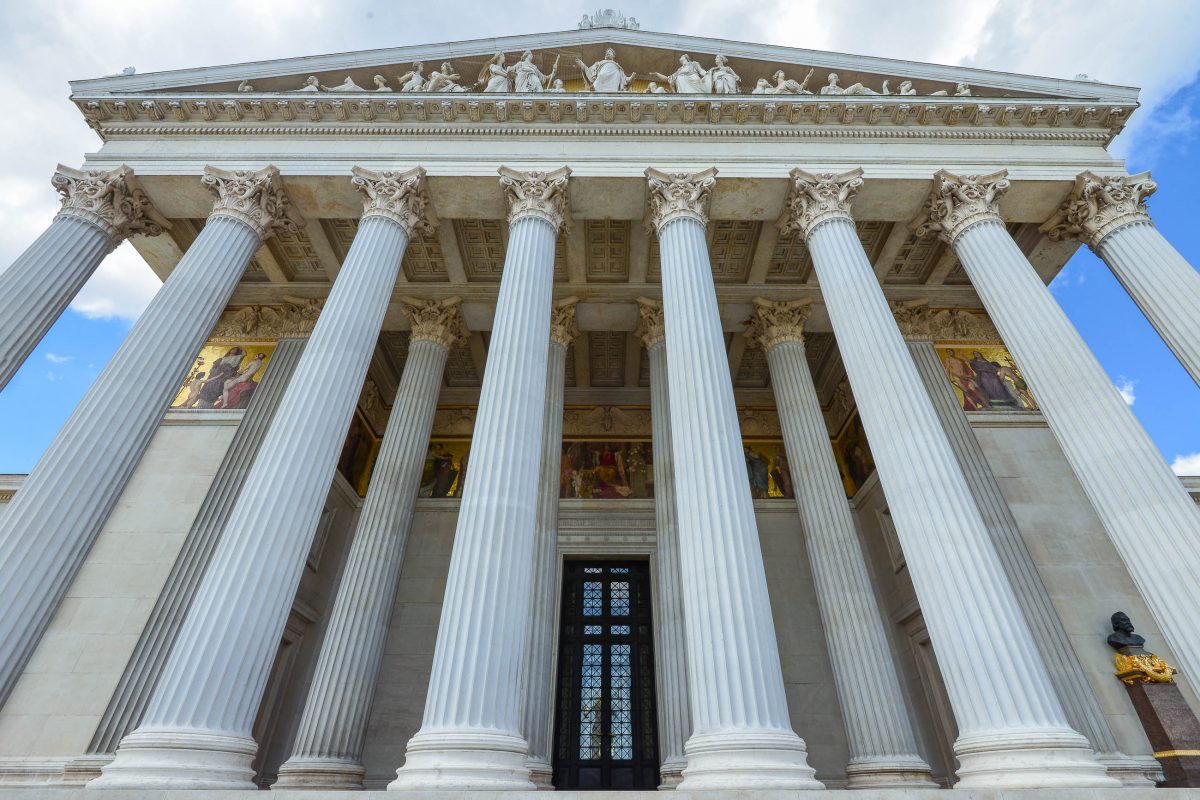
Das Parlamentsgebäude wurde in Anlehnung an die griechische Klassik entworfen und ist von außen prächtig anzusehen. Sein Eingang erinnert nicht zufällig an den weltbekannten Tempel Parthenon der Akropolis in Athen.
Vor der säulenbewährten Eingangshalle thront der Pallas-Athene-Brunnen, auf dem griechische Göttin der Weisheit von der Legislative mit dem Gesetzbuch und der Exekutive mit dem Richtschwert flankiert. Zu ihren Füßen liegen Allegorien der Flüsse Donau, Inn, Elbe und Moldau.
Rechts und links des Brunnens führen zwei Rampen zum Haupteingang, die von griechischen und römischen Historikern gesäumt werden. Thukydides, Polybios, Xenophon, Herodot sowie Julius Cäsar, Tacitus, Livius und Sallust sollen den ein- und ausgehenden Politikern die „Verantwortlichkeit gegenüber der Geschichte“ in Erinnerung rufen.
Den Giebel des Haupteingangs schmückt ein monumentales, 38 Tonnen schweres Marmorrelief, welches Kaiser Franz Joseph I. als römischen Imperator darstellt. Die beiden von vier Pferden gezogenen Streitwägen rechts und links des Giebels sollen den Triumph des Parlamentarismus symbolisieren.
Besuch des Wiener Parlaments
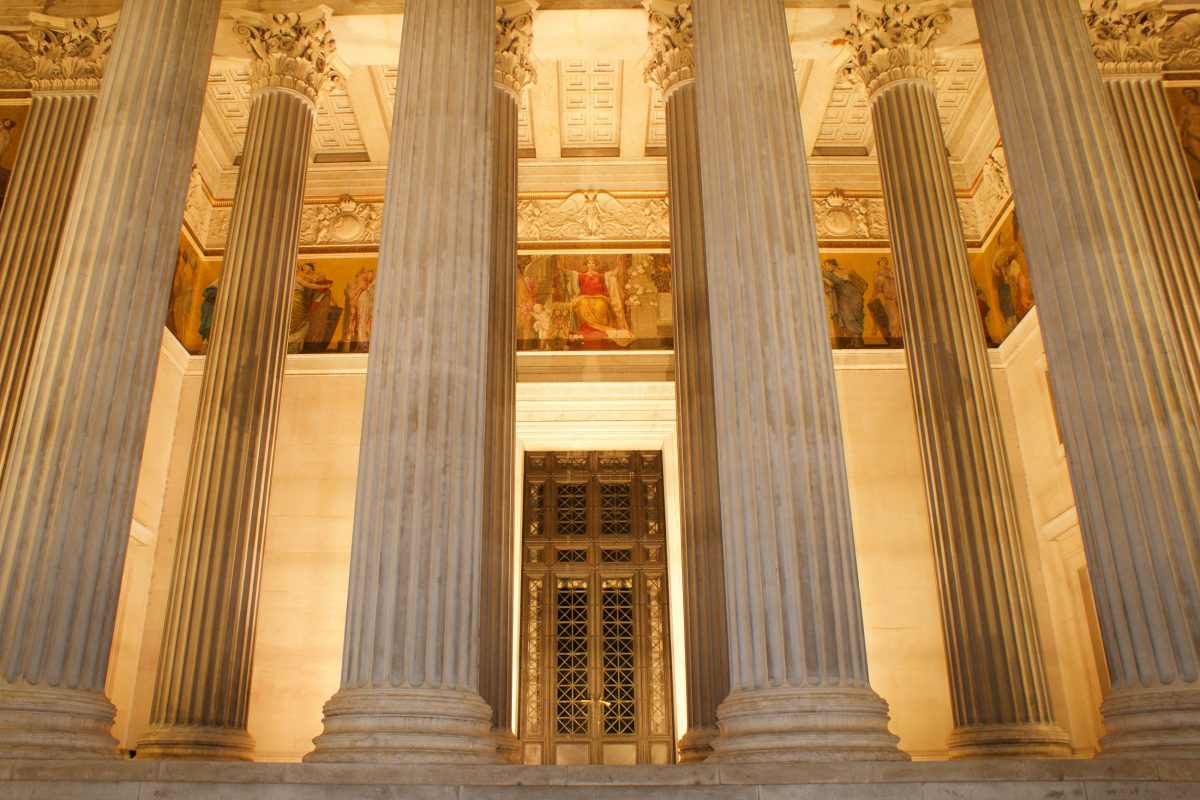
Die prunkvollen Räumlichkeiten des Parlaments können ausschließlich im Zuge von Führungen besichtigt werden, die Anmeldung erfolgt im Besucherzentrum unterhalb der Rampe, die zum Eingangsportal führt. Besuchern wird dabei nicht nur die typische Ringstraßenarchitektur des 19. Jahrhunderts näher gebracht, sondern auch das Staatswesen der Republik Österreich.
Große Säulenhalle
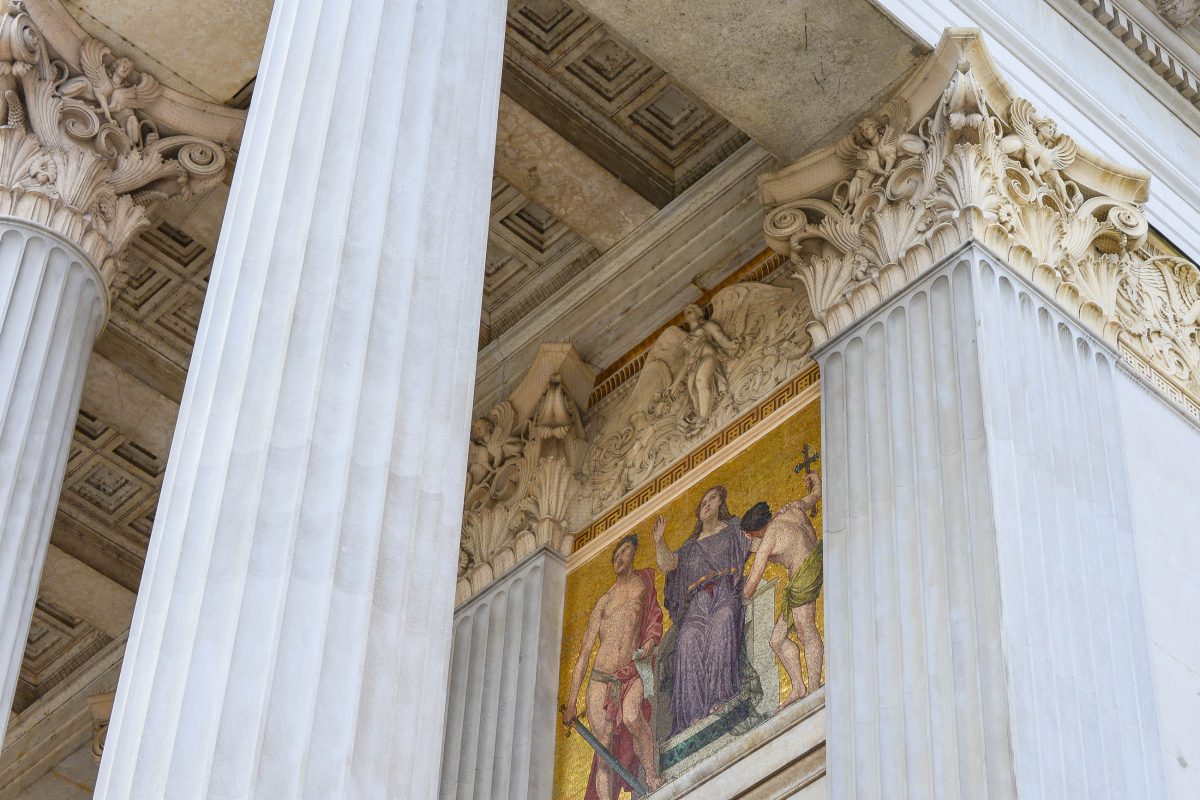
Durch das monumentale Hauptportal des Parlamentsgebäudes gelangt man durch das Obere Vestibül und das Atrium in die große Säulenhalle, den mit einer Fläche von knapp 1.000 Quadratmetern größten Raum im Gebäude.
Besonders bemerkenswert sind hier der Boden aus feinstem Marmor und die gewaltigen korinthischen Säulen, die jeweils aus einem einzigen Marmorblock gemeißelt wurden. In dieser imposanten Halle finden regelmäßige Empfänge, Ausstellungen und andere Veranstaltungen statt.
Sitzungssäle
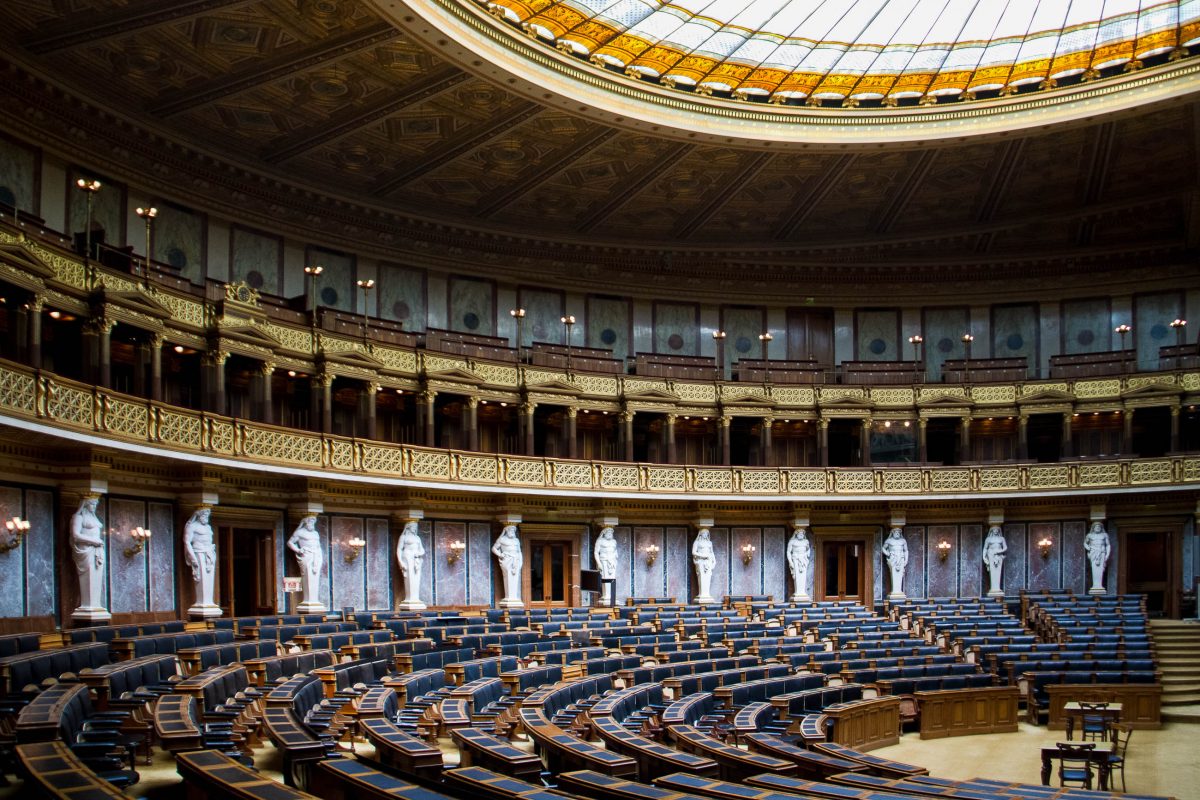
Zu den weiteren Highlights eines Rundgangs durch das Parlament gehören die Sitzungssäle von National- und Bundesrat und der historische Reichsratssitzungssaal, der schon zu Zeiten der Monarchie als Sitzungssaal des Abgeordnetenhauses diente.
Heute wird der einem griechischen Theater nachempfundene Raum für die Bundesversammlungen verwendet, an denen sowohl der National- als auch der Bundesrat teilnehmen. Ein Blick nach oben offenbart das kunstvolle Glasdach, welches von Hand bemalt wurde.
Abgesehen von Führungen erhalten Interessierte Informationen über Parlament im frei zugänglichen Besucherzentrum. Auch die Plenarsitzungen des Nationalrates sind öffentlich und nach einer Anmeldung im Besucherzentrum mit Lichtbildausweis kostenlos zugänglich.
Geschichte des Parlamentsgebäudes von Wien

Kaiser Franz Joseph I. ließ das heutige Parlamentsgebäude zusammen mit dem Rathaus und der Universität auf einem ehemaligen Parade- und Truppenübungsplatz errichten. Die Grundsteinlegung des damals noch Reichsratsgebäude genannten Prachtbaus erfolgte am 2. September 1874.
Das Parlamentsgebäude wurde durch den Architekten Theophil Hansen errichtet, dessen Entwurf sich stark an der griechischen Klassik orientierte. Sowohl die Säulen und Giebel des Gebäudes, als auch die monumentale Statue der Pallas Athene, der Göttin der Weisheit, auf dem ebenfalls von Hansen erbauten gleichnamigen Brunnen machen den griechischen Einfluss mehr als deutlich. Umgerechnet würde der Bau des Parlaments heute an die 200 Millionen Euro verschlingen.
Insgesamt besitzt das Parlament 1.600 Räume. Das Sicherheitspersonal absolviert für einen kompletten Rundgang durch das gesamte Parlament einen Marsch von 13 Kilometern.
Die erste offizielle Sitzung wurde im Dezember 1883 abgehalten und kurz vor der Ausrufung der Republik Österreich am 12. November 1918 wurde der Reichsrat durch das „Parlament Deutschösterreich“ abgelöst und der National- und Bundesrat zogen in das Parlamentsgebäude ein.
Während des Zweiten Weltkriegs wurde der Bau nicht parlamentarisch genutzt, im Gegenteil wurde er in den Bombenangriffen auf Wien schwer beschädigt. 1945 zog die Regierung wieder ein und der Wiederaufbau dauerte bis 1956. Im Zuge der originalgetreuen Reparaturarbeiten wurde der Sitzungssaal komplett erneuert und mit der neuesten Technik ausgestattet.
Weiterführende Links:

